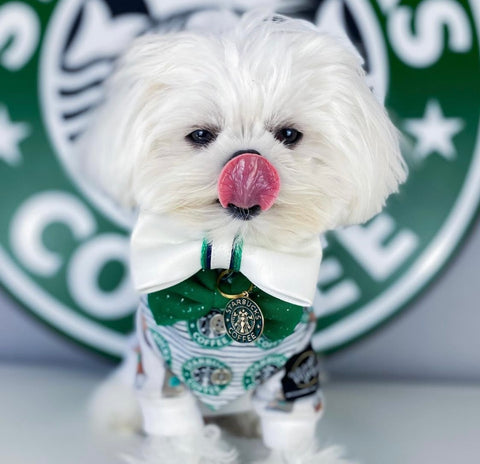Dogs do speak, but can you understand them?

It is normal for pet parents to believe that our dogs are just a moment away from speaking to us, and the truth is, they already are, just not with words. Aside from them learning commands or even using buttons for asking for things like you might have seen on the Internet, pups tell a lot about how they are feeling through their body language. Knowing how to read their signals can have a significant impact on your relationship as well as on reactions when approaching other animals or people, so let’s go ahead and review some of them.
Since every signal can be different depending on what other characteristics they are accompanied by, let’s separate them into what they mean.
WHEN A DOG IS HAPPY TO SEE YOU
A happy dog is what we aim for, which is why it is likely that you know how to interpret most of the signals coming from a relaxed and content puppy. Although we often see a wagging tail as something positive, it depends on other factors to determine if they aren’t stressed instead. In this case, it is all about being relaxed. If their body is not stiff, if their mouth is open, ears are up, stance is loose, then congratulations, you’ve encountered a jolly doggy. They can either have a tail pointing up, wagging side-to-side, going around like a helicopter or just hanging casually.
If in a playful mood, dogs tend to put their tooshies out in the air with their front body lowered and proceed with bouncy movements. Their pupils might also indicate excitement when they are dilated. To show affection, they lick their humans’ faces and lean towards them. Knowing that your pup is as excited to see you as you are to see them is a great feeling. Fostering a positive relationship like that takes willingness to put in quality time and cater to their needs.
Fun fact, it is believed that dogs will more likely wag to the right when in a pleasant encounter. Asking for belly rubs is also a good sign, but being that vulnerable can not just be comfort, it could also mean an extreme situation of anxiety and stress depending on the circumstances. Same goes with licking their lips, it can just be grooming for when having a delicious meal, but other times it can be an indicator of stress. Want to know other ways our pets tell us they are not feeling great?

TELLING IF A DOG IS STRESSED
Dogs are sensible beings; changes in their surroundings can make them anxious and stressed. For their health and your peace-of-mind, these are some of the things to look out for in them so you can help them calm down.
Did you know dogs sweat? They do so through their paws. It is a normal bodily function just like it is for humans, but if that happens along with other particular behaviors, it can become worrying. Frequent yawning, tension in the body, a tail lowered in between the hind legs, drooling, lip-licking, shaking, eyes showing a lot of white, flat ears pointed back, panting; all these point towards a negative experience that your little furry friend is going through, forcing a reaction out of him or her.
ANSWERING TO A THREAT
When afraid, dogs can try to assert dominance, responding in a confrontational way. This includes showing a stiff, raised tail; ears pointing forward; the hair on their back, also known as hackles, raised; low-toned growls and a typical angry look, the one with a wrinkly forehead and nose, uncovering their teeth. Other dogs, people or their actions can trigger aggression. Sometimes dogs are more irritable because they are not comfortable or feel restricted when on a leash, causing them to pull and misbehave, which can hurt them. Aggressiveness does not happen from one second to another, which is when understanding your pooch’s body language becomes crucial.On the other side, dogs can also appear submissive when frightened. At this point, they lower their body, avoid eye contact, move their ears backward, tuck their tails in between their legs and even lift their paws or try to lick the threat, their lips or the air. In cases of extreme distress, they lay on their backs with an exposed belly and can let out a bit of pee because of the unpleasurable experience.
IS MY DOG IN PAIN?
When a dog is in pain, acting in time can make a big difference. I have always been frightened by the idea of not being able to recognize the signs when something is wrong and my pet may be hurting, which is why I think it’s important to check for the following.
Some of the more evident ways to recognize an afflicted pet is if he or she is shaking, panting, licking excessively or seems more irritable or aggressive in general. If a dog suddenly changes habits, appears to have a stiff posture and is unenthusiastic about playing or socializing, play close attention. On some occasions you can notice a physical injury easily, other times you might stay alert in case it’s something internal. It is important to keep your loved fur friend safe, and that ranges in a lot of factors, even having the products or accessories with the proper characteristics.
DOGS READ SITUATIONS AND SO CAN YOU
Dogs are really smart. They talk to each other all the time, even without saying a woof. They have several signals for trying to calm others or themselves down, like showing their backs to the other party or turning their heads to the side. Interestingly, you can try and respond that way to your dog, too, and speak their language.
It is important to note that every dog is different, from their tails to their brains, a pug might not move the same as a husky. As an owner, you can tell your dog’s base posture and translate from there. And as much as they are a part of our everyday lives, we cannot forget they are different from us and react to things differently. What to us is showing affection, like a hug, to them can be a threat to their own space. Knowing to speak like they do helps us gain a deeper level of trust, making everything simply better. Let your dogs know you respect them and understand them, giving them a loving and comfortable home, caring for them, walking them. If you want a little extra, you can also spoil them with quality (and honestly beautiful) products like ours. Take a look!
Would you be interested in knowing breed specific details? What else would you like to know about dogs? We can talk about them forever!


Leave a comment